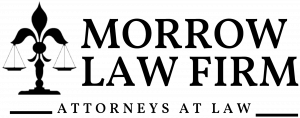
Legal Procedures for Filing Claims After Car Fire in Louisiana
“Car fires are complex incidents that often require careful analysis to determine liability and the appropriate course of action,” says Morrow. “Understanding the claims process is vital to ensuring fair compensation.”
Identifying the Cause of the Car Fire
Determining the root cause of the car fire is one of the first steps in filing a claim. Causes can vary and may include:
Mechanical Failures: Defective parts such as wiring, fuel systems, or overheating engines are common culprits.
External Factors: Incidents like collisions, vandalism, or environmental conditions may trigger fires.
Negligence or Maintenance Issues: Poor vehicle maintenance or unsafe modifications can lead to fire risks.
The cause of the fire plays a critical role in determining whether the claim falls under comprehensive insurance coverage or requires third-party liability evaluation.
Steps to Take Immediately After a Car Fire
Preserving evidence and documenting the scene are essential to support an insurance claim or potential legal case. Key steps include:
Ensuring Safety: Evacuate all passengers and contact emergency services if the fire poses an immediate danger.
Documenting the Incident: Take photographs and videos of the damaged vehicle and surrounding area, noting any contributing factors such as fuel leaks or damaged electrical components.
Obtaining a Fire Report: If emergency services are called, request a copy of the fire report for use in the claims process.
Preserving the Vehicle: Avoid moving or altering the vehicle before an investigation unless required by safety concerns.
Filing an Insurance Claim
Most car fire claims are filed under comprehensive auto insurance, which covers non-collision-related damages such as fire, theft, and natural disasters. The process includes:
Notifying the Insurance Company: Contact the insurer promptly to report the incident and initiate the claims process.
Submitting Evidence: Provide documentation such as photographs, the fire report, and any relevant receipts for repairs or maintenance.
Understanding Policy Terms: Review the policy to understand coverage limits, deductibles, and exclusions. Policies often exclude damages caused by intentional acts or pre-existing issues.
Legal Considerations and Liability
In cases where a car fire results from negligence, defective manufacturing, or third-party actions, additional legal considerations come into play.
Manufacturer Liability
If the fire stems from a manufacturing defect, the vehicle manufacturer may be held liable under product liability laws. Common scenarios include:
Design Flaws: Issues in the vehicle's design that make it prone to overheating or fire.
Manufacturing Defects: Errors in production, such as faulty wiring or substandard materials.
Failure to Warn: Lack of adequate warnings or instructions about known risks.
Documenting evidence of the defect and consulting with a legal professional are essential steps in pursuing a claim against the manufacturer.
Third-Party Negligence
If another party’s actions caused the fire, such as a collision with another vehicle or improper repairs by a mechanic, liability may extend to that individual or entity. In such cases:
Evidence Collection: Gathering documentation that establishes negligence, such as repair invoices or accident reports, is critical.
Comparative Fault: Louisiana follows a comparative fault system, meaning the degree of fault assigned to each party impacts the amount of compensation awarded.
Injuries and Property Damage
If the fire caused personal injuries or damage to surrounding property, these claims can involve additional legal procedures. Medical documentation and repair estimates for damaged property may be necessary to support such claims.
Timelines and Deadlines for Filing Claims
Louisiana law imposes strict deadlines for filing claims related to car fires:
Insurance Claims: Most policies require prompt notification, with specific timeframes varying by insurer.
Legal Claims: The state’s statute of limitations for personal injury and property damage claims is generally one year from the date of the incident. Filing beyond this deadline may result in the loss of legal rights to compensation.
Understanding and adhering to these deadlines is essential to preserving the validity of a claim.
Seeking Legal Guidance
Given the complexities involved in car fire claims, seeking professional guidance ensures that all legal and procedural requirements are met. Attorneys can assist with:
Evaluating Evidence: Determining the cause of the fire and identifying liable parties.
Negotiating with Insurers: Ensuring that claims are processed fairly and in compliance with policy terms.
Litigation: Representing clients in court if disputes arise over liability or compensation.
Conclusion
Car fires in Louisiana present a unique set of challenges for vehicle owners, from navigating insurance policies to understanding potential liability. Timely action, thorough documentation, and a clear understanding of legal requirements are critical to achieving a fair outcome. For those facing the aftermath of a car fire, consulting with a qualified legal professional can provide clarity and support throughout the claims process. By addressing the root cause and following the appropriate procedures, property owners can ensure their rights are protected and damages are properly compensated.
Morgan Thomas
Rhino Digital, LLC
+1 504-875-5036
email us here
Visit us on social media:
Facebook
Distribution channels: Culture, Society & Lifestyle, Insurance Industry, Law
Legal Disclaimer:
EIN Presswire provides this news content "as is" without warranty of any kind. We do not accept any responsibility or liability for the accuracy, content, images, videos, licenses, completeness, legality, or reliability of the information contained in this article. If you have any complaints or copyright issues related to this article, kindly contact the author above.
Submit your press release

